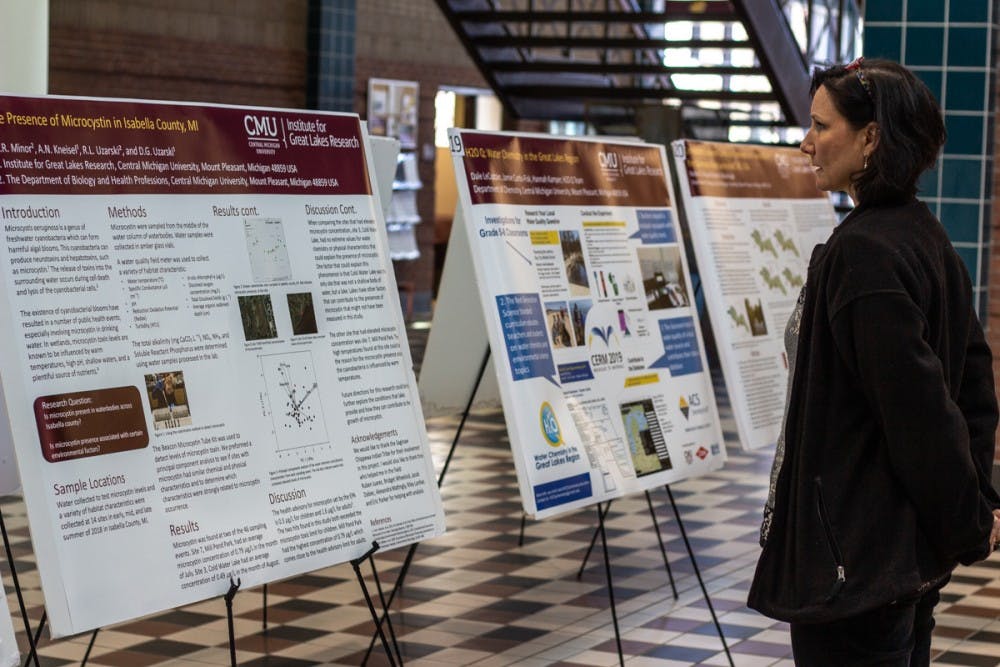Student researchers present Great Lakes research projects

Biology faculty Kirsten Nicholson judges the student research presentations for the Great Lakes Research Symposium in the School of Engineering and Technology March 22.
Central Michigan University graduate, post-graduate and undergraduate students presented their Great Lakes-centered research projects at the 7th annual Student Research Symposium March 22.
Seven students each gave 15-minute presentations about their research. An additional 21 students were able to discuss their research with attendees on posters in the atrium of the Engineering and Technology building.
Research topics ranged from invasive species to the tracking of environmental contaminants.
Leah Jackson, a doctoral student from Texas, presented research that is part of her dissertation about groundwater contamination in Ann Arbor caused by the discharge of the toxic chemical 1,4-Dioxane by Gelman Sciences between the 1960s and 1980s.
Jackson was inspired to study hydrogeology when she was working in the oil fields after receiving her undergraduate degree from Sam Houston State University in Texas.
“Water is becoming a finite resource,” Jackson said. “It’s something we need to work to preserve for future generations as much as possible.”
While working on groundwater-centered research, Jackson came to realize there are far more problems with groundwater contamination than most people know of. Though, in many of these cases, the amount of contamination would not directly threaten humans. Even small amounts of groundwater contamination could disrupt an area’s ecosystem.
The portion of Jackson’s research she presented concerned the possibility that a native Ann Arbor strain of bacteria operating in oxygen-deprived environments may be breaking down the toxic chemical in contaminated groundwater. If Jackson finds bacteria that can break down 1,4-Dioxane, that same bacteria may be able to break down similar contaminants.
Seattle doctoral student Jake Kvistad, who moved from Seattle to study the Great Lakes, worked on controlling the rusty crawfish invasive species on a fish-spawning reef. The hypothesis behind the research is that controlling the rusty crawfish population during the fish-spawning season could result in larger fish populations since the invasive crawfish eats fish eggs.
To prove his hypothesis, traps were temporarily deployed on fish-spawning reefs during different spawning seasons to reduce the number of rusty crawfish and to prevent more of the invasive species to repopulate the spawning reefs.
“There’s just a lot of unknowns about what (rusty crawfish are) actually doing in the lakes,” Kvistad said. “There’s a lot of potential there for new discoveries.”
Holland sophomore Hannah Kamper presented the project, “H20 Q Water Chemistry in the Great Lakes Region," a program that sends water-testing kits to teachers who request them in the Great Lakes area to create a public database on the region’s water quality. Along with a backpack holding water-testing kits, teachers are provided with materials to help them understand the chemistry behind the water tests along with learning objectives for a lesson plan on the water test kits.
While the project is organized and overseen by chemistry and biochemistry faculty Dale LeCaptain in partnership with the American Chemical Association, Kamper is currently working on creating a more efficient nitrate test.
Kamper said she plays a more cost-effective role in redesigning water quality tests.






